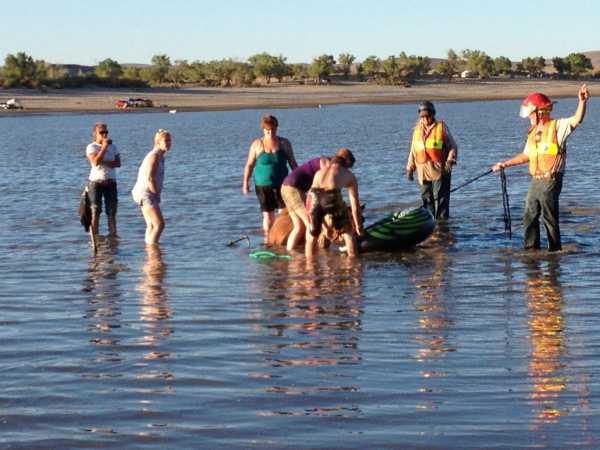|
This report is a continuation of Part One..
The beach-goer who offered use of his winch exhibited good winch skills. A snatch block was attached to a tug strap and the winch cable was run out to the snatch block and back to the winch pickup. This two-to-one advantage reduced the load on the winch and also improved the control of the winching operation as it reduced the winching speed by one-half. The winch volunteer also placed a mat over the winch cable to reduce cable whip in the event the cable, a hook or a strap failed.
The winch setup.
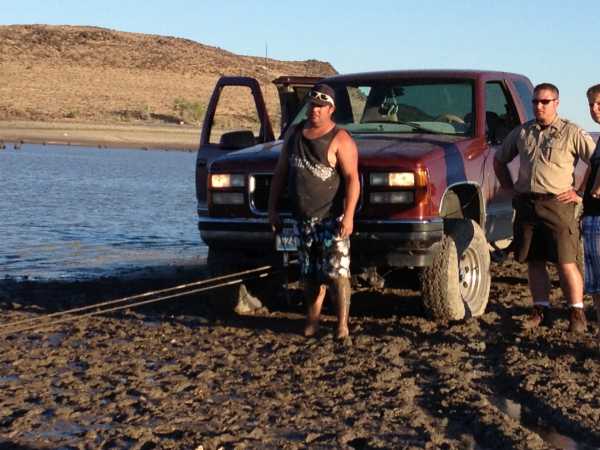
Sternal position, forward assist.
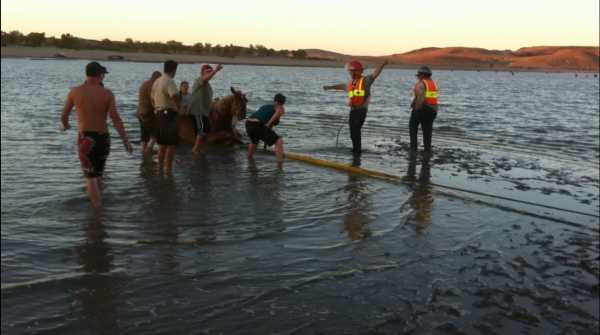
During the next forward assist Reno attempted to get up. By this time everyone including beach-goer helpers were aware of the various danger zones so the true "fish flop" that ensued put nobody at risk. Given that the footing in the lake was tricky and it wasn't easy to move quickly, thus overall awareness was essential to operational safety.
Reno attempting to rise.
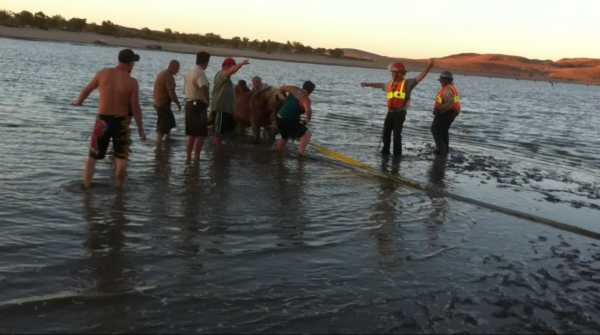
Everyone remains clear as the horse falls over.
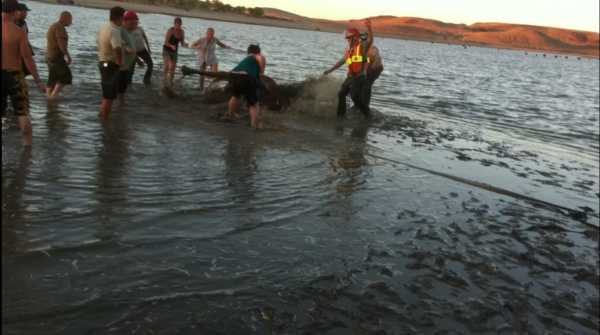
Maintaining head position to keep him from drowning until everyone regrouped.
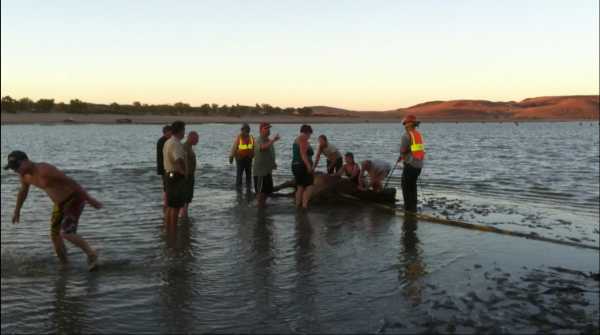
Ultimately the horse had to be dragged on shore. He was exhausted and shivering. He was blanketed and provided water and grass hay cubes softened in water. As it was getting dark, a campfire was built nearby to provide additional warmth.
Eventually Reno regained enough strength to stand, after which he displayed a desire to walk about, which he was allowed to do on-lead in a safe area of the beach. Reno was later transported to a location where he could be examined by a veterinarian and treated if necessary.
A priority is protecting Reno's "down side" eye.
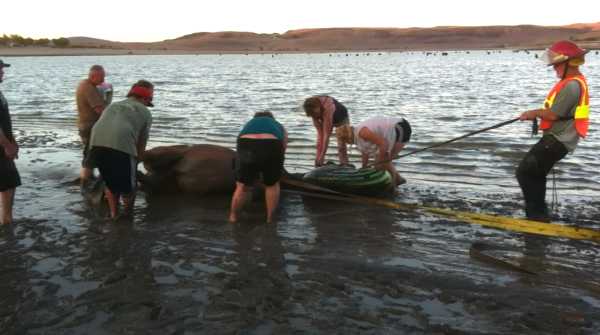
Reno, back on his feet.
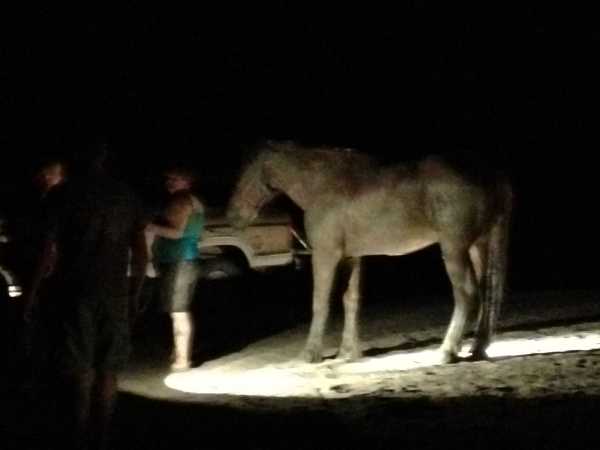
The time that lapsed between Reno becoming stuck and once again regaining his feet onshore was close to eight hours.
Post scripts.
Following veterinary treatment, as of Monday morning Reno was alert, walking, eating and drinking normally along with related bodily functions. While any adverse effects from long term entrapment and immersion in water could take a few days to be fully realized, Reno's apparent rapid return to "normal" behavior was an extremely encouraging sign.
Follow-up with Reno's owners some weeks later revealed that the horse exhibited no lasting ill effects from the incident.
Lessons Learned
Particularly given that in this incident only two of the "in water" rescuers had any large animal technical emergency rescue experience and there was a great reliance on spontaneous volunteers, the operation went relatively well and was successful.
Now the real fun begins. Cleaning equipment and returning it to service.
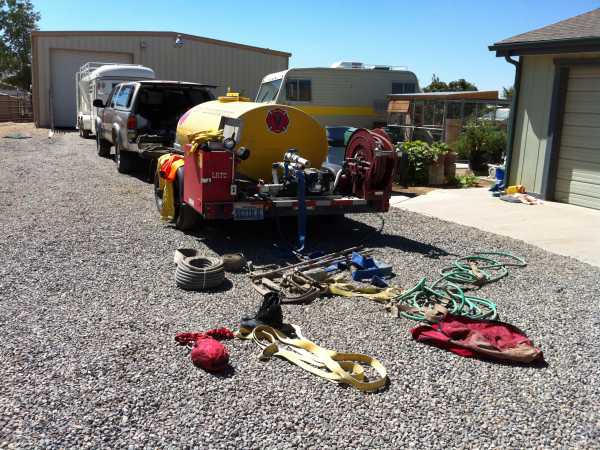
|



